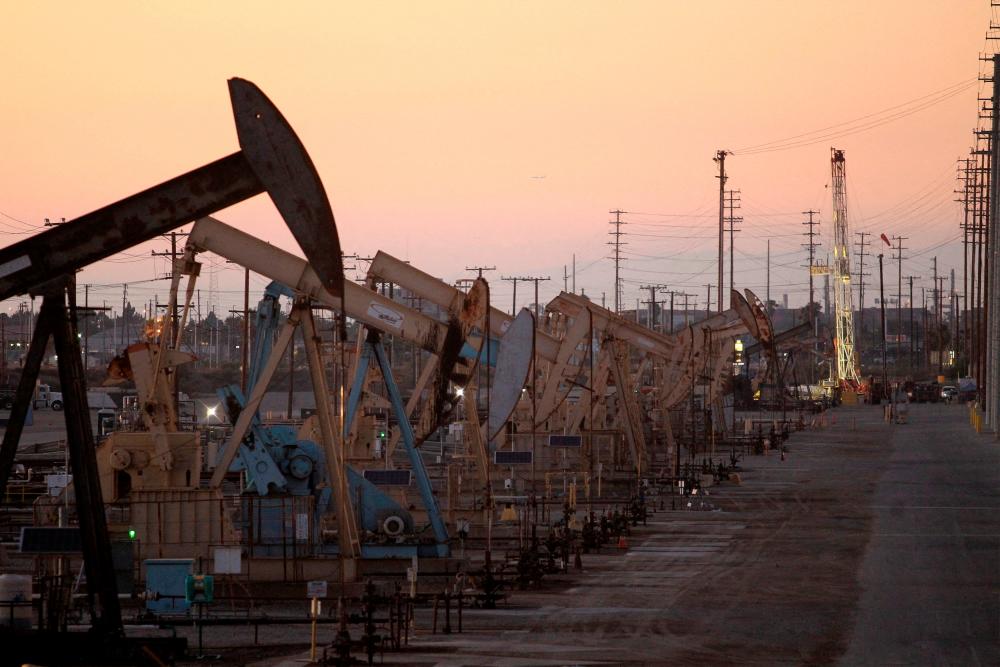NEW YORK: Oil prices settled lower on Tuesday (Feb 20), with worries about global demand offsetting price support from the Israel-Hamas conflict.
Brent futures settled down US$1.22, or 1.5%, to US$82.34 (RM395.02) a barrel. The six-month spread for Brent on Tuesday was at its highest since October, a sign of a tighter market.
US West Texas Intermediate (WTI) crude for March delivery settled down US$1.01, or 1.3%, to US$78.18 (RM375.06) a barrel. The March contract expired on Tuesday. The more actively traded April WTI contract settled down US$1.30, or 1.4%, to US$77.04 (RM369.59) a barrel.
There was no settlement for WTI on Monday due to a US public holiday.
The premium for prompt US crude futures to the second-month contract more than doubled, hitting a high of US$1.71 a barrel – its widest in roughly four months. This encourages energy companies to sell now rather than paying to store product for future months.
Crude markets were “marginally lower” in “quiet trading over the Presidents’ Day holiday in the US and as demand concerns offset ongoing Middle Eastern geopolitical tensions,” IG market analyst Tony Sycamore said in a note.
Shipping has suffered as Iran-aligned Houthis, in support of Palestinians, have increased attacks on shipping lanes in the Red Sea and Bab al-Mandab Strait. Drone and missile strikes have hit at least four vessels since Friday.
Despite the conflict in the Middle East, one of the world’s major oil-producing regions, investors appear more worried about flagging global demand.
China announced its biggest ever reduction in the benchmark mortgage rate, the largest since the reference rate was introduced in 2019 and far more than analysts had expected.
“The fact that the crude market hasn’t responded more positively shows you the depths of the oil demand problems in China,” said John Kilduff, partner at Again Capital LLC here.
An International Energy Agency (IEA) report last week revised the 2024 oil demand growth forecast downward, to almost a million barrels a day less than producer group Opec’s outlook.
The IEA estimated global oil demand will grow by 1.22 million barrels per day (bpd) this year. Opec's growth forecast is 2.25 million bpd.
The two disagree about the shift to renewable and cleaner energy. The IEA, which represents industrialised countries, predicts oil demand will peak by 2030 while Opec expects oil use to keep rising for the next two decades.
US oil refiners are running at weak levels due to seasonal maintenance and unplanned outages, but warmer winter weather may prompt refiners to ramp up rates, analysts said.
US crude inventories were seen up last week, a preliminary Reuters poll showed, while the rate of refinery utilisation was expected to increase 1.1 percentage point from 80.6% of total capacity in the previous week.
“A much larger increase should not be ruled out given this year’s weather uncertainties,” said Jim Ritterbusch, president of Ritterbusch and Associates in Galena, Illinois. – Reuters









